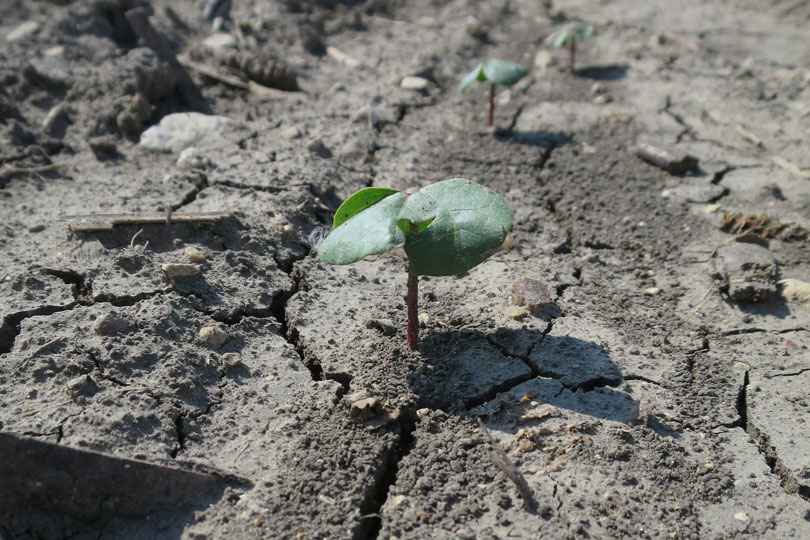By Justin Walker
Communications Specialist
A recent Texas Tech University study may change the way cotton irrigation occurs during dry seasons.
A study conducted by Dr. Glen Ritchie, associate professor of Crop Physiology at Texas Tech with a joint appointment with Texas A&M AgriLife Research, and his team found that less water and better irrigation timing improved cotton boll distribution and fiber quality.
The study, conducted near Plainview, used three different water rates at three different times to see how the combinations impacted cotton plants. A total of 27 watering routines were used during several trials.
Ritchie and his team found that less water applied early in the growing season resulted in smaller plants, but had little effect on cotton yields and no effect on fiber quality. They also discovered the most critical time for irrigation application is in the middle of the growing season.
“What we can take away from this is that the common assumption that early watering will build up a ‘water bank’ in the soil may not be the best method for growing upland cotton during dry seasons,” Ritchie said. “Instead, lessening irrigation after plants come out of the soil will get plants used to less water and still result in good yields and fiber quality. Conversely, if water is limited, over-irrigating early will increase the risk of poor fiber quality.”
More testing is necessary, but evidence from early stages show positive signs that irrigation methods can help to maximize production results in the Texas Plains, where drought conditions continue to cause issues for farmers and ranchers.
While previous studies have looked at the effects of water shortage on cotton growth, yield and fiber quality, as well as the impacts of severe, moderate and low water stress on cotton boll distribution and mass, Ritchie said there is very little research on whether less irrigation at exact intervals could result in equal or more efficient boll production.
Ritchie believes his study provided more reason for future research in that area.
“With the decline of water supplies in the Plains, there is an interest in how to limit the amount of water the cotton requires but keep it healthy,” he said. “Determining the effects of less water will allow producers to get the most out of the water they use.”
For more information on the study, click here.

